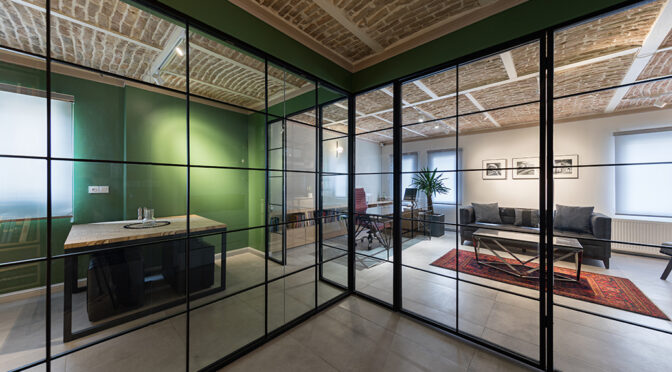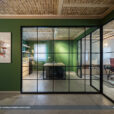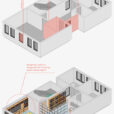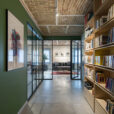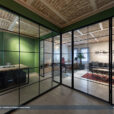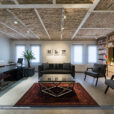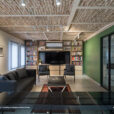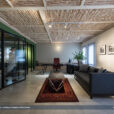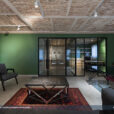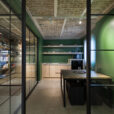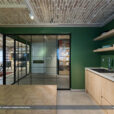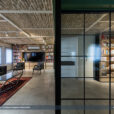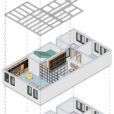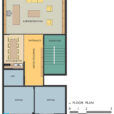دفتر انتشارات پارسه
دفتر معماری ایده همساز (رئوف قاسمی، ثریا انصاری)
موقعیت: تهران، ایران
تاریخ: ۱۴۰۲
مساحت: ۱۳۰ مترمربع
وضعیت: ساختهشده
کارفرما: اسماعیل حسنزاده
همکار طراحی: سمیه خجسته
عکس: محمدحسن اتفاق
موضوع پروژه، بازسازی یک طبقه از ساختمان اداری انتشارات پارسه و تبدیل آن به مدیریت مجموعه بود، ساختمان ۳۵سالهای که طبقات پایینتر آن به تولید و توزیع انتشارات اختصاص دارد. در مشاوره با کارفرما و نیازسنجی صورتگرفته، ایجاد فضایی یکپارچه و همسان مورد توافق قرار گرفت. از اینرو، تصمیم بر آن شد که تقسیمبندی فضاهای داخلی به کمک پارتیشنهای شیشهای انجام پذیرد. به لحاظ سازهای نیز حذف تیغههای داخلی و تبدیل آنها به پارتیشنهای سبک، کمخطرتر و مفیدتر ارزیابی شد.
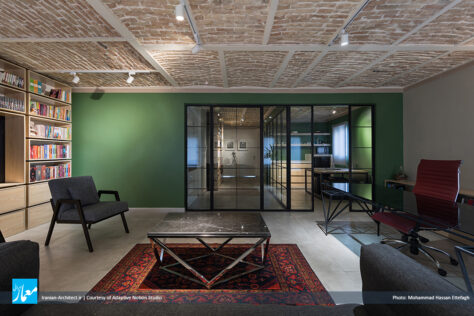
نتیجه پلان جدید پروژه، یک اتاق مدیریتی بزرگ در ارتباط با لابی ورودی، و یک اتاق استراحت و ناهارخوری کوچک در کنار اتاق مدیریت بود. دیواره روبهروی میز مدیریت نیز بهگونهای طراحی شد که فیلمبرداری برای مصاحبه، و معرفی ویدئویی محصولات و کتابهای تازه انتشاریافته امکانپذیر باشد.
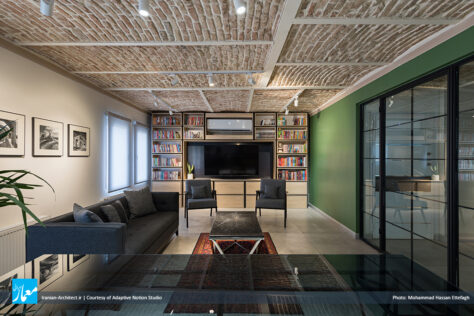
کاربری پروژه و قرارگیری آن در خیابان انقلاب باعث میشد بهصورت خواسته یا ناخواسته، ترکیبی از فضاهای کهنه و نو در کنار یکدیگر قرار گیرند. بنابراین ترکیب رنگها، و انتخاب متریالها و مبلمان بر اساس این همنشینی صورت پذیرفت. همچنین بدنههایی که عمدتا در معرض دید کاربران هستند، به قفسههای کتاب اختصاص یافتند تا این قفسهها را به عنوان مرکز ثقل معنایی پروژه بازنمایی کنند.
Parseh Publishers Office
Adaptive Notion Studio (Raouf Ghasemi, Soraya Ansari)
Location: Tehran, Iran
Date: 2023
Area: 130 sqm
Status: Completed
Client: Esmaeel Hasanzadeh
Design Team: Somayeh Khojasteh
Photo: Mohammad Hassan Ettefagh
The subject of the project was the renovation of one floor of the office building of Parseh Publishers, and turning it into the management space of complex; A 35-year-old building whose lower floors are dedicated to the production and distribution spaces. In the consultation with the client and the needs assessment, it was agreed to create a unified and uniform space; So, it was decided to divide the interior spaces by glass partitions. From a structural point of view, removing the internal walls and turning them into light partitions was evaluated as less dangerous and more useful.
The result of the new plan of project was a large management room in connection with the entrance lobby, and a small lounge and dining room next to the management room. The wall facing the management desk was also designed in such a way that filming for interviews, and video introduction of newly published books and products is possible.
The function of the project and its location in Enghelab Street made a combination of old and new spaces be placed next to each other, intentionally or unintentionally. Therefore, the combination of colors, selection of materials and furniture was based on this coexistence. Also, The walls that are mainly visible to the users, were assigned to the bookshelves, to represent these shelves as the semantic gravity center of the project.

